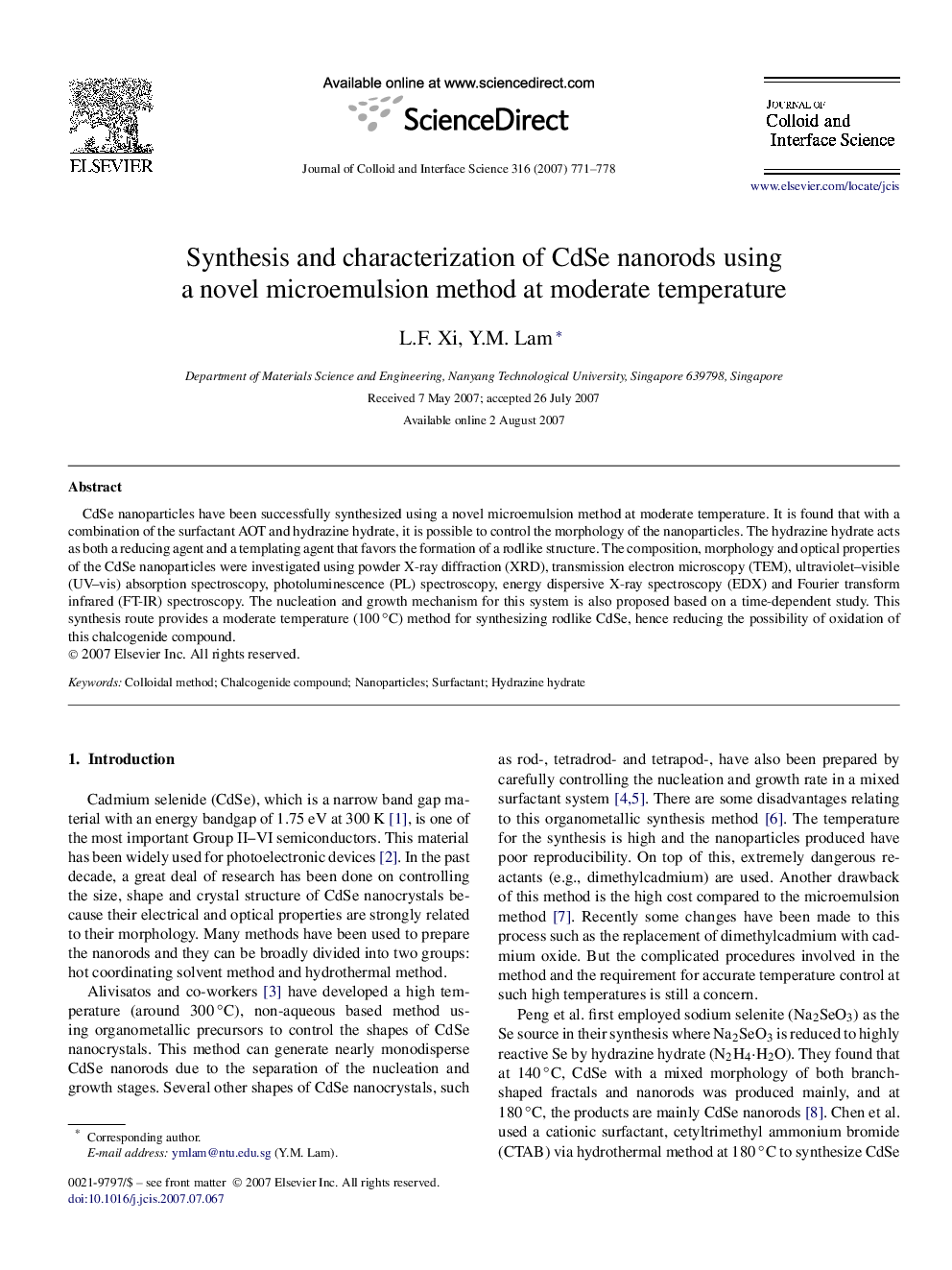| Article ID | Journal | Published Year | Pages | File Type |
|---|---|---|---|---|
| 612064 | Journal of Colloid and Interface Science | 2007 | 8 Pages |
CdSe nanoparticles have been successfully synthesized using a novel microemulsion method at moderate temperature. It is found that with a combination of the surfactant AOT and hydrazine hydrate, it is possible to control the morphology of the nanoparticles. The hydrazine hydrate acts as both a reducing agent and a templating agent that favors the formation of a rodlike structure. The composition, morphology and optical properties of the CdSe nanoparticles were investigated using powder X-ray diffraction (XRD), transmission electron microscopy (TEM), ultraviolet–visible (UV–vis) absorption spectroscopy, photoluminescence (PL) spectroscopy, energy dispersive X-ray spectroscopy (EDX) and Fourier transform infrared (FT-IR) spectroscopy. The nucleation and growth mechanism for this system is also proposed based on a time-dependent study. This synthesis route provides a moderate temperature (100 °C) method for synthesizing rodlike CdSe, hence reducing the possibility of oxidation of this chalcogenide compound.
Graphical abstractFigure optionsDownload full-size imageDownload as PowerPoint slide
